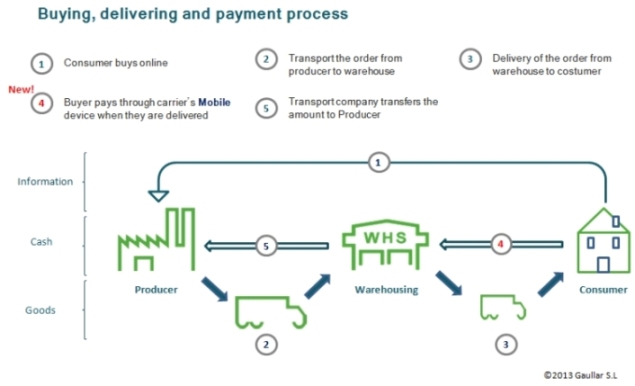It is a fact that logistic and transport (L&T) companies providing delivery services to e-shops run, technologically, one step behind the fast-growing e-commerce industry. Today e-shops have a wide choice of transport companies to deliver their goods within the Iberian Peninsula in 24-48 hours. If the service demanded it is only to deliver a box from A to B, the margin would be relatively low for a service that requires various processes to be optimal. It would be a good exercise for many e-commerce managers to jump into a delivery van one morning. By doing so, they would realise that finding the delivery address and a nearby parking place, asking the concierge for the service stairway since the elevator is out of service, to finally find out that the consignee is not at home, or has not cash to pay what he/she bought, and on top of this, to report in real time to control tower; they would find out that 9 € paid to the transport company for this service, is more than well-earned money.
We cannot fight against market prices, but we can paddle faster than others to adapt to future needs. For that reason, we need to understand why some people buy in the internet and why others don’t. The e-commerce gurus are clear with the reasons why people buy online: offer, price and convenience. The L&T sector plays an important role in the second driver, but highly in the third one. New investments and developments must focus on making the e-commerce convenient, without forgetting costs.
Let’s go back to this history main player: the e-buyer. What is the main difference today between a traditional and an online transaction? For the majority of the e-commerce deals, the consumer must pay in advance, relaying that the quality of the product and the service bought will be as expected. But why does the consumer have to assume the risk until the final delivery? This is certainly an inconvenient that can, for instance, be solved with cash-on-delivery. At this point, e-commerce and transport companies should join forces to develop new methods to complete the transaction at the moment of delivery; mainly in Spain, where 1 of 3 e-purchases are paid in cash, even though it leads to an extra-cost (see the 2012 European Commission e-market Study).
We all understand that cash-on-delivery means an added value service with a direct cost that increases the final price and, therefore, the transport firm obtains a higher margin. At this point, a problem might arise if the recipient does not have the exact sum to pay the delivery in cash. Traditionally only cash is accepted, with the known inconveniences (such as with traceability, safety …). An alternative is to accept credit and debit cards, but the Point of Sale (PoS) means extra costs for the hardware and the finance services. Today the main e-commerce players can benefit from the latest technologies. Low cost devices, connected to a smartphone, working as an all-in-one wireless PoS. This system also allows to easily manage on-line payments in real time amongst other advantages that improve traceability and safety: geo-location (allowing to know where the payment is done) and other electronic proofs of delivery.
We find ourselves in a sweet moment when L&T companies have the opportunity to abandon that antique image, offering innovative solutions to make on-line shopping even more popular, safer and, above all, more convenient.
